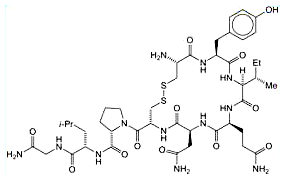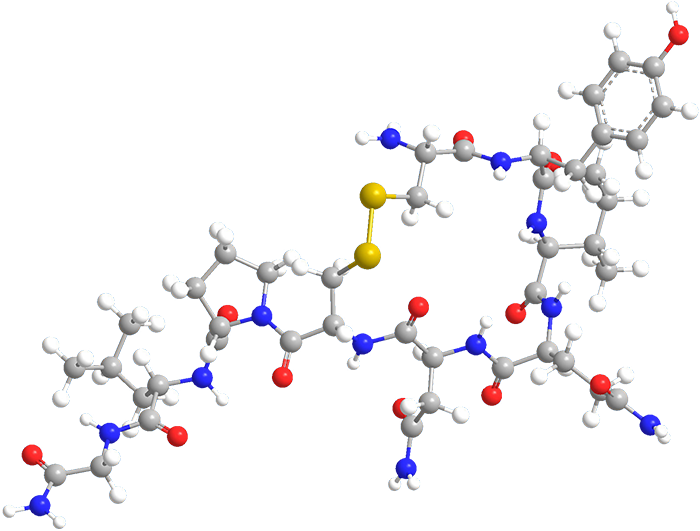

Oxytocin is a polypeptide secreted by the posterior pituitary gland of mammals. It has several hormonal functions, including contraction of the uterus during labor, lactation stimulation, and possibly orgasm. H. H. Dale discovered ocytocin’s biological properties in 1906; V. du Vigneaud received the Nobel Prize in chemistry in 1955 for isolating and synthesizing it. Synthetic oxytocin is sold under the trade names Pitocin and Syntocinon (and as a generic drug) for inducing labor.
MOTW update:
May 06, 2019
Oxytocin is a pituitary hormone that contracts the uterus during labor and stimulates lactation in nursing mothers, among other functions. Now, Haruhito Higashida at Kanazawa University (Japan), Satoshi Shito at Hokkaido University (Sapporo, Japan), and colleagues are exploring oxytocin derivatives to develop longer lasting, more potent drugs to combat autism and depression.

Learn more about this molecule from CAS, the most authoritative and comprehensive source for chemical information.
Molecule of the Week needs your suggestions!
If your favorite molecule is not in our archive, please send us a message. The molecule can be notable for its current or historical importance or for any quirky reason. Thank you!
Stay Ahead of the Chemistry Curve
Learn how ACS can help you stay ahead in the world of chemistry.

